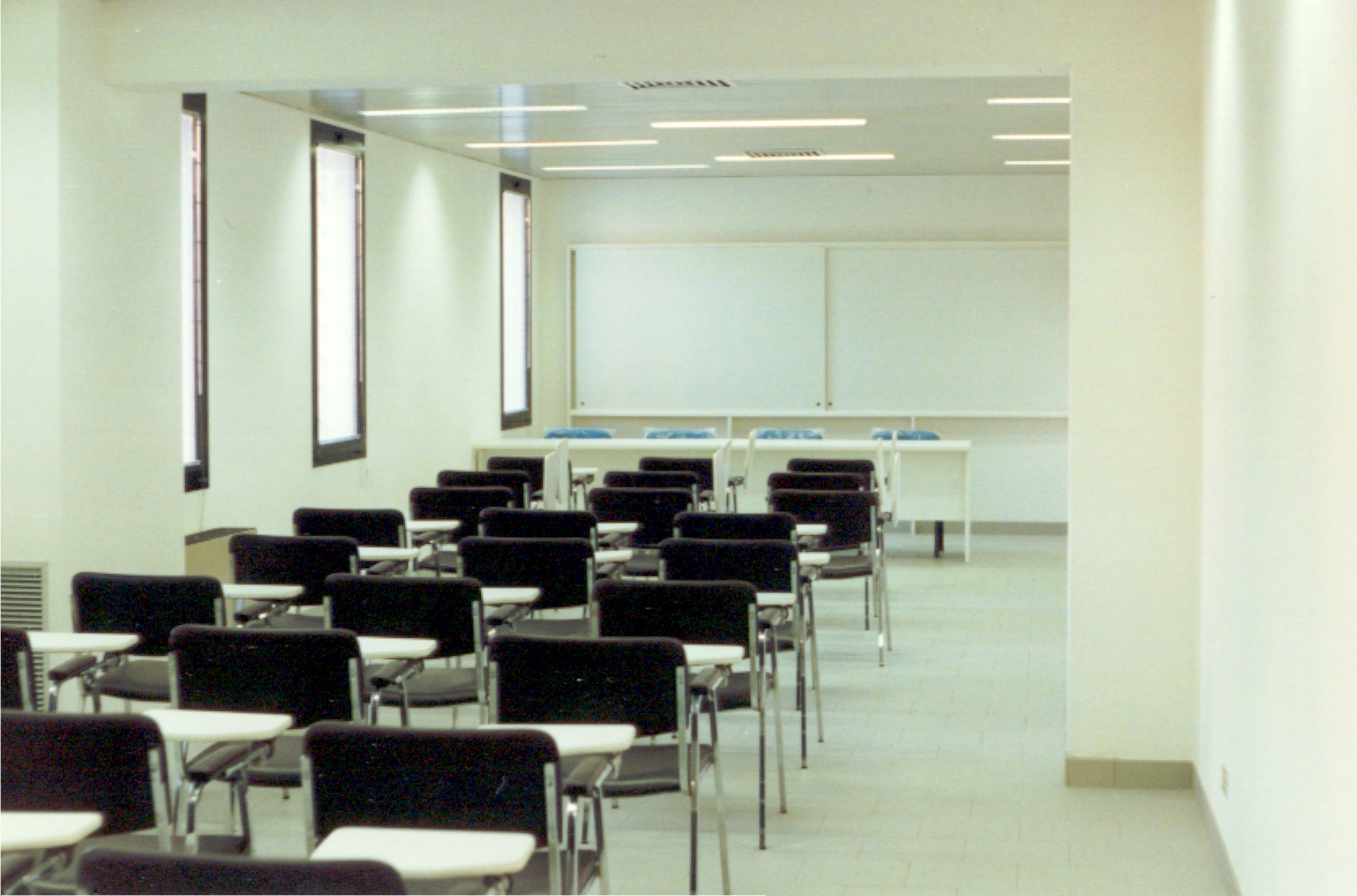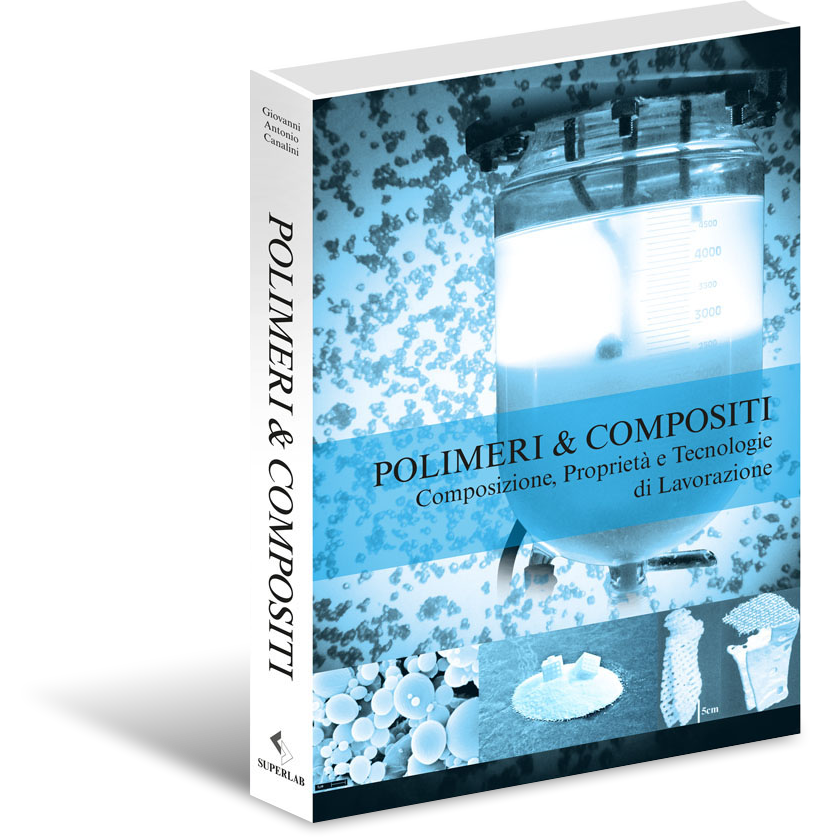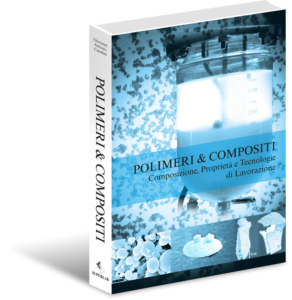TRAINING FOR OPERATORS IN THE PLASTIC MATERIALS PROCESSING INDUSTRY
The experience of those who work in Superlab has been acquired in different product areas of use of polymers and, therefore, able to express a multidisciplinary teaching sensitivity, which manifests itself in different phases useful for learning knowledge about plastic materials.
These phases are like chapters in a specialist book, which can deal with the chemical nature of polymers and their formation processes, the performance of materials, ways of characterizing them and differentiating them by performance aptitude.
We can easily discuss technologies for their transformation into artefacts, to direct the choice both on the basis of the functional expectations required of the artefacts themselves, and on the characteristics associated with the molecular masses most suitable for the process and the transformation conditions.

Equally useful for the dissemination of knowledge and the availability of Superlab knowledge are the elements that allow the functional horizon of polymers to be broadened through more or less qualifying modifications, through mixing techniques and even very sophisticated formulation solutions.
Depending on the level of knowledge you wish to acquire and the qualification of the technical staff involved, customizations of the training program are possible.
The elements, useful for presenting the educational content to be selected according to the training needs of the users, are shown in the program at the bottom.

The “summa” of Superlab’s teaching capacity is represented by the book “Polymers and Composites“, available to be purchased from the Superlab administrative section.
The work represents the educational contribution that cannot be missing in the daily practice of professionals who, in various capacities, operate in the plastics sector and tells about the world of polymers, the way of producing them and qualifying them, with the ambition of encouraging the development of applications according to expected performance expectations.
You can learn how to intervene on polymeric matrices to adapt them to transformation technologies, with the aim of obtaining qualitatively and commercially competitive products, imposing adequate attention to the effects on the environment in the formulation interventions, while trying at the same time to transfer knowledge and affection for polymeric materials.
BASIC COURSE: ELEMENTS OF TRAINING
THE GENESIS OF POLYMER PRODUCTS
- The chemistry of petroleum: Fractionation, cracking and distillation
- Raw material sources of plastics: Natural polymers, synthetic polymers and processes
- The main types of polymeric products:polyolefins, styrenics, PVC, acrylics, saturated polyesters, polyamides, polyurethanes, unsaturated polyesters, polyureas, epoxy, melamine.]
THE BASIC STRUCTURE
- The monomeric unit: Types of monomers and their reactivity
- The concept of polymer: Polyaddition, polycondensation, reactive processing, cross-linking
- Molecular weight: Fluidity, viscosity, distribution, effect of molecular mass on properties and transformation processes
- Polymerization Processes: In solution, in suspension, in mass, in gas phase; catalytic systems and particle morphology
- The Large Families: Analysis of the evolution of thermoplastic and thermosetting materials
- The Molecular Structure: Comparison between Amorphous, Semicrystalline, Cross-linked, Vulcanized and Thermosetting polymeric materials (state transitions and thermodynamic values)]
THE CHARACTER AND PROPERTIES OF PLASTIC MATERIALS
- Solid State Rheology: Static mechanical behaviours, viscoelasticity, “creep” phenomena, “stress-relaxation”, fatigue resistance
- Rheology in the molten state: Viscoelastic behavior: fluidity and viscosity in solution; Newtonian and non-Newtonian fluids: consequences on the properties of artefacts
- Intrinsic Properties: Analysis of the main physical, mechanical, thermal and electrical properties
- Surface and Aesthetic Properties: Electrical resistivity, wettability and friction coefficients, surface hardness and crystalline structure, colorability, surface brightness
- Insulating Properties: Resistivity and dielectric rigidity, thermal conductivity, sound insulation
- The Strengths and Defects: Evaluations of the functional perspectives of the related products, compared to the general properties of the polymers.
CHEMICAL AND STRUCTURAL MODIFICATIONS
- The Main Objectives of Base Modifications: improvements in the performance of matrix polymers for the addition of additives, modifiers, fillers and reinforcements, compared to design performance with cost/performance analysis
- The different techniques: Solid and melt mixing: dry blending, gelation and compounding. Techniques, technological parameters and effects
- Modifiers: Process and operational stabilizers, process auxiliaries, fillers, reinforcements, flame resistant additives, intramolecular and interfacial reactives, surfactants
- Compatibility between Inert Polymers: Surface tension, surface chemical reactivity, compatibility, chain modifiers, intermolecular and intramolecular chemical bonds
- Polymeric Alloys: Polymeric modifiers, thermodynamics of fluid phases and chemical-physical compatibility, valorisation of the cost of modifications
- The Cost/Performance Relationship: Comparison between modified polymers and matrix polymers: performance balance and specific values
- Opportunities allowed by the increased performance: Analysis of the possibilities of use offered by the modified polymers compared to the starting polymer matrices.
TRANSFORMATION TECHNOLOGIES
- Extrusion: Main technical aspects of the process, advantages, disadvantages and limitations in relation to the needs and performances of the different polymers
- Injection Molding: Main technical aspects of the process, advantages, disadvantages and limitations in relation to the needs and performances of the different polymers
- Blowing: Main technical aspects of the process, advantages, disadvantages and limitations in relation to the needs and performances of the different polymers
- Rotational: Main technical aspects of the process, advantages, disadvantages and limitations in relation to the needs and performances of the different polymers
- Spinning: Main technical aspects of the process, advantages, disadvantages and limitations in relation to the needs and performances of the different polymers
- Sintering: Main technical aspects of the process, advantages, disadvantages and limitations in relation to the needs and performances of the different polymers.
THE MAIN APPLICATIONS
- Transport Sector: Analysis of the main applications of the sector and analysis of the products used with a view to the cost-performance ratio
- Home appliance sector: Analysis of the main applications in the sector and analysis of the products used with a view to the cost-performance ratio
- Electrical sector: Analysis of the main applications of the sector and analysis of the products used with a view to the cost-performance ratio
- Audiovisual sector: Analysis of the main applications of the sector and analysis of the products used with a view to the cost-performance ratio
- Packaging sector: Analysis of the main applications of the sector and analysis of the products used with a view to the cost-performance ratio
- Industrial Sector: Analysis of the main applications of the sector and analysis of the products used with a view to the cost-performance ratio.
TECHNIQUES AND METHODS OF ANALYSIS FOR PLASTICS
- The Theoretical Elements: Theoretical assumptions (models and algorithms) for the various types of analysis and controls; representativeness of numbers and statistical values
- Practical Operation: International regulations and their correspondence. Meaning of the various tests. Weight evaluation of the various characterizations to represent the functional expectation of the artefacts.
PLASTICS AND THE ENVIRONMENT
- Reduction of Properties: Degradation processes of the dimensional molecular weight and consequent effects on the negative variation in the performance of the degraded polymer.
- Environmental Resistance: Conflicting relationship between the chemical nature of polymers and their resistance in different possible operating environments: liquid solvents, surfactants, oils and greases
- Chemical-Physical Degradation: Structural modification processes of polymers subjected to physical, chemical and thermal aging and consequences on the initial properties
- Regeneration: Reuse of processing sprues and evaluation of the extent of performance degradation; use of additives to support the average life affected by previous processes
- Recycling: Reuse of post-consumer plastic materials: separate collection, washing and granulation to obtain granules selected for performance
- End-of-life disposal: Undifferentiated collection of heterogeneous plastic products: energy recovery by combustion, use as fillers, destination in landfill.
“POLYMERS & COMPOSITES”
The educational contribution that cannot be missing in the daily practice of professionals who in various capacities operate in the plastics sector.
The work tells about the world of polymers, the way of producing them and qualifying them, with the ambition of encouraging the development of applications according to the expected performance expectations.
You can learn how to intervene on polymer matrices to adapt them to transformation technologies, with the aim of obtaining qualitatively and commercially competitive products, imposing adequate attention to the effects on the environment in the formulation interventions, while trying at the same time to transfer knowledge and affection for polymeric materials.

